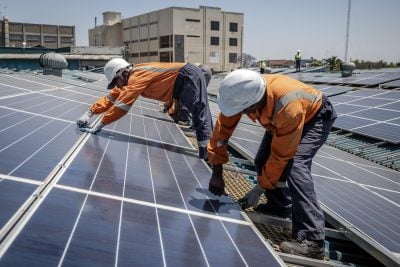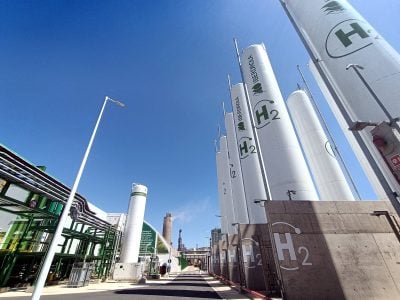The rise and fall in the price of copper is regarded as an accurate bellwether to the health or otherwise of the global economy. It is also critical to the economies of African copper producers such as Zambia and the DRC. MJ Morgan takes the pulse of one of the continent’s most important minerals.
Copper has been on the up after a tough start to the year. The price progression of the metal provides a salutary lesson for all those getting caught up in the latest phase of ‘irrational exuberance’. The metal is lauded as ‘Dr Copper’ because it is reputed to be the only commodity with a PhD in Economics. Certainly its price reflects the general wellbeing of the global economy and sometimes even appears to anticipate events. So what is it trying to tell us now?
Copper fell 18% to $6,637 per tonne in June, having started the year at $8,084.50 per tonne. The reasons for this are multifaceted – and perhaps ultimately obscure – but they coalesce around gut feelings about the substance of the global economic recovery.
However, the fundamental driver is Chinese demand. Since China imports 40% of the world’s copper, optimism or pessimism about the economic fortunes of the Middle Kingdom are closely mirrored in its price. As one would expect, given this hypothesis, as anxieties about Chinese growth – which the government is seeking to moderate and control – have lifted, prices have risen to $7,300 per tonne, recouping half of this year’s losses. Future prices for December are $200 higher.
Africa is home to two of the 10 largest copper producing nations; Zambia which produces 675,000 tonnes is seventh; and the Democratic Republic of Congo (DRC) which produces 580,000 tonnes is eighth. Currently, Chile is first with 5.37m tonnes last year out of global production totalling about 15m tonnes.
Zambia copper
Copper generates about 10% of the Zambia’s GDP but accounts for 80% of export earnings. The country is seeking to increase its rents from the industry, to the apprehension of miners there. Zambia is believed to be losing something in the region of $2bn to corporate tax avoidance, according to the Chamber of Mines.
The Chamber foresees that output more than doubling to 1.5m tonnes by 2016 – more than the entire combined output of the continent’s mines at present. This is going to take a lot of investment but at present that investment looks to be forthcoming.
China is, naturally enough, a big player here. The Zambia and China Economic and Trade Cooperation Zone (ZCCZ) is the first of the Multi-Facility Economic Zones (MEZ) is the first Chinese overseas economic and trade cooperation zone established in Africa and has attracted more than $1bn in investment. As the biggest Chinese investor in Zambia, China Nonferrous Metals (CNM) mine is the developer of the ZCCZ. CNM owns 85% of Luanshya Copper Mines and 90% of the vast Chambishi mine. The company is investing $832m in Chambishi as it seeks to raise production to 100,000 tonnes across its mines.
India too is well represented. Vedanta Resources subsidiary Konkola Copper Mines owns the only smelter in Africa, the Nchanga in Chingola, with a capacity of 311,000 tonnes.
The biggest copper mine in Africa is Kansanshi, owned 80% by Canada’s First Quantum 20% by ZCCM-IH (the successor to Zambia Consolidated Copper Mines) – in which the Zambian state is the majority shareholder. ZCCM-IH typically holds between 10-20% of the country’s mines’ equity. Kansanshi produced 261,351 tonnes last year (as well as 136,056 oz of gold) but now has the capacity to produce 360,000 tonnes, rising to 400,000 tonnes by 2015.
Giant Canadian gold miner, Barrick Gold, purchased Equinox Minerals for $7.3bn in 2011, picking up the Lumwana copper mine in the process. Barrick has lowered the headcount. Production stands at 55,000 tonnes and cash costs (a metric measuring the cost of production) are around $5,900 per tonne.
Glencore Xstrata is also in Zambia. It owns Mopani Copper Mines, which is looking to raise output from 120,000 to 170,00 tonnes by 2015. It is investing $468m and provides 3,000 jobs. The company’s copper production was up 20% in the first half: stronger performance at its DRC mines played a major role in this.
In fact, across Glencore’s African (that is, Zambian and DRC) operations, production rose 40% to 171,500 tonnes in the first half. The Katanga and Mutanda mines in Congo are expected to produce 270,00 tonnes and 200,000 tonnes respectively over the full year.

Copper roller-coaster
But prices in this sector fluctuate wildly. Copper fell as low as $3,000 per tonne at the turn of 2008/9, following the global financial crisis, before climbing as high as $10,000 per tonne in April 2011. Of particular concern is fundamental supply and demand. A Reuters poll of experts forecast a market in surplus this year by 153,000 tonnes (revised up from 98,500), rising to 368,500 by 2014.
There is huge potential in the Copperbelt, which has an estimated 140m tonnes of copper reserves. It is obvious that the growing surplus cannot help but weigh on prices, although a rise in demand may offset this. But in the medium term, declining ore grades and a shift towards harder-to-extract copper, such as that at Konkola Deep, exert steady upward pressure as old mines go offline.
In an interesting development, researchers from Monash University in Australia claim to have contradicted peak copper theory. According to the theory, copper was forecast to run out in 30 years. This was seen as a result of declining ore quality. Monash’s analysis says there are, in fact, plenty of reserves of copper (i.e. that are economically feasible to extract).
“Although our estimates are much larger than any previously available, they’re a minimum. In fact, figures for resources at some mining projects have already doubled or more since we completed the database,” said Monash’s Dr Jowitt. The constraining factors are: “Workers’ rights, mining impacts on cultural lands, issues of benefit sharing and the potential for environmental degradation [which] are already affecting the viability of copper production and will increasingly come into play,” his colleague Dr Mudd said.
DRC copper
Certainly, for the time being at least, the money is flowing in, in DRC as well as Zambia. FDI into DRC rose from $1.7bn to $3.3m in 2012, much of which has gone to mining.
Freeport McMoRan has invested $2bn in its vast copper-cobalt mine (with the world’s largest reserves) at Tenke Fungurume in the southeast – the largest private investment in the county’s history. Production is currently in the region of 158,000 tonnes of copper and 12,000 tonnes of cobalt. Phase II expansion is expected to push that to 195,000 tonnes, at a cost of $850m. The company is also developing the Kisanfu project, near Kolwezi.
Also near Kolwezi is Ivanplats’ Kamoa copper project. It is expected to commence production in 2017, with output in the region of 143,000 tonnes per year from a deposit of remarkably high ore quality of 2.37%. The company also wishes to develop a substantial smelter in the DRC to process concentrates. Local power utility SNEL will provide the necessary energy.
Also seeking a better share of rents, DRC has raised its copper and cobalt export tax from $60 per tonne to $100 per tonne – as it seeks to deter unrefined mineral exports. The tax was introduced in 2010, following a failed attempt to ban such exports. Exporting unprocessed minerals squanders the opportunity to maximise value from resource endowments. Miners in the county were given 90 days’ notice of a ban on exports of copper and cobalt concentrates inApril. The ban has now been put back and is scheduled to commence on 31st December 2013. Freeport McMoRan and Glencore already process much of their copper in country so will not be too badly impacted. But this is not true of ENRC, whose copper output was at 25,000 tonnes over the first half. The company’s Frontier mine enters production next year and is expected to produce 40,000 tonnes per year.
The future
There are fears of a predicted tapering in Federal Reserve monetary stimulus from September. The expected reduction in Fed bond purchases from $85bn a month to around $65bn a month caused a minor market panic when it was first floated as a possibility earlier in the year. Commodity prices fell sharply. However, there are market rumours, based on remarks by the Chinese Minister of Industry and Information Technology Miao Wei, that China may introduce some new stimulus of its own. This may provide a significant boost to prices, even in the face of such tapering.
Views on China have calmed. It is believed that the country will manage a slowdown and use levers, such as stimulus, as it sees fit. This has reassured the copper market considerably.
Want to continue reading? Subscribe today.
You've read all your free articles for this month! Subscribe now to enjoy full access to our content.
Digital Monthly
£8.00 / month
Receive full unlimited access to our articles, opinions, podcasts and more.
Digital Yearly
£70.00 / year
Our best value offer - save £26 and gain access to all of our digital content for an entire year!
 Sign in with Google
Sign in with Google 


